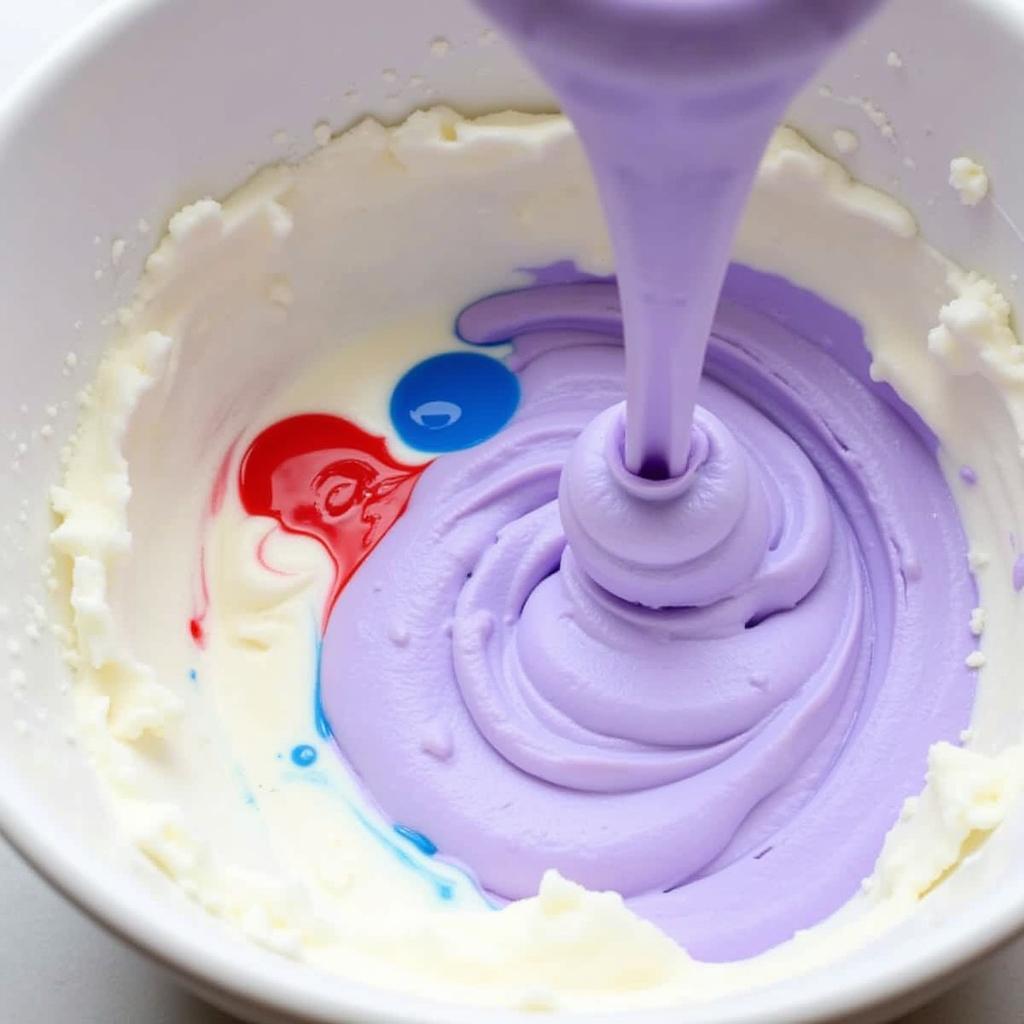Purple, the color of royalty, creativity, and mystery, is a secondary color that emerges from the harmonious blend of two primary colors: red and blue. However, achieving the perfect shade of purple is more nuanced than simply combining these two.
Understanding the Color Wheel: The Foundation of Purple
To fully grasp how to make purple, it’s essential to understand the concept of the color wheel. This visual representation of color relationships places primary colors (red, blue, yellow) at equal distances, with secondary and tertiary colors filling the spaces between.
When you mix two primary colors, you create a secondary color. Purple sits directly opposite yellow on the color wheel, signifying their complementary relationship. This means that mixing yellow with purple can create a neutral gray or brown, while purple can enhance the vibrancy of yellow and vice versa.
What Colors Do You Mix to Make Purple: Decoding the Variations
The exact shade of purple you achieve depends largely on the proportions of red and blue used, as well as the specific pigments within each color.
- More Red, Less Blue: A higher ratio of red to blue yields warmer purple hues, such as magenta, crimson, and orchid.
- More Blue, Less Red: Dominating the mixture with blue results in cooler, bluer purples like indigo, violet, and lavender.
 Different shades of purple
Different shades of purple
The Impact of Pigments
Beyond ratios, the specific pigments present in your red and blue paints play a significant role. For instance, a warm red like cadmium red mixed with ultramarine blue (a cool blue) will create a different purple than mixing alizarin crimson (a cool red) with the same blue.
Beyond Red and Blue: Exploring Other Color Combinations for Purple
While red and blue form the foundation, you can experiment with other color combinations to achieve unique shades of purple.
- Adding White: Incorporating white lightens the purple, creating pastel shades like lilac and mauve.
- Adding Black: Adding black to purple creates a deeper, richer tone, often referred to as eggplant or plum.
- Adding Yellow: As mentioned earlier, yellow is purple’s complementary color. Adding small amounts can create muted, earthy purples or even browns, depending on the ratios.
Expert Insight: “Don’t be afraid to experiment with unexpected color combinations,” advises renowned color specialist, Emily Carter. “Sometimes, a touch of green or orange can add depth and complexity to your purple hues.”
Practical Applications: Mixing Purple in Various Mediums
The principles of color mixing apply across various mediums, from painting to baking.
How Do I Make Purple with Food Coloring?
Achieving purple frosting for your cake follows the same basic principle. Start with a white frosting base, gradually add drops of red and blue food coloring, and mix thoroughly until you reach your desired shade. Remember, a little goes a long way with food coloring, so start with small amounts and adjust as needed.
 Mixing purple frosting with food coloring
Mixing purple frosting with food coloring
How to Make Grey Frosting with Food Coloring: A Purple Connection
Interestingly, you can also use purple food coloring to create grey frosting. Start with a white frosting base, and instead of red and blue, add tiny drops of purple food coloring. The purple will neutralize the white, gradually transitioning it into various shades of grey.
Conclusion: Embrace the Versatility of Purple
Understanding how to make purple unlocks a world of creative possibilities. From the subtlest lavender to the boldest violet, purple offers a spectrum of shades to enhance your artistic endeavors, whether you’re painting a masterpiece or decorating a cake. Remember, the key lies in experimenting with color ratios, understanding pigment properties, and, most importantly, having fun exploring the endless nuances of this captivating color.
FAQ
1. Can I mix purple with other colors besides red and blue?
Absolutely! While red and blue are the foundation, you can experiment with other colors like white, black, and even yellow to create unique variations of purple.
2. What happens if I mix too much blue when making purple?
Your purple will lean towards a cooler, bluer shade. You can try adding small amounts of red to balance it out.
3. Is it possible to create a metallic purple?
Yes! You can find metallic purple paints or add a touch of gold or silver glitter to your purple mixture to create a shimmering effect.
4. What colors go well with purple in design?
Purple pairs beautifully with a range of colors. For a harmonious look, consider pairing it with analogous colors like blue and pink. For a bolder statement, opt for its complementary color, yellow, or create contrast with green.
5. Where can I find more information on color mixing?
You can explore our blog for more in-depth articles on what colors mixed together make purple, what colors do you mix to make purple, and other color mixing techniques. We also have helpful guides on how do you make cream color and how do i make purple with food coloring.
For tips on creating unique shades like grey frosting, check out our article on how to make grey frosting with food coloring.
Need further assistance with your color journey? Don’t hesitate to contact us! Our expert team at Color Box Hanoi is available 24/7 to answer your questions and guide you in creating your dream space. Call us at 0373298888, email us at [email protected], or visit us at 86 Cầu Giấy, Hà Nội. Let us help you unlock the power of color!

